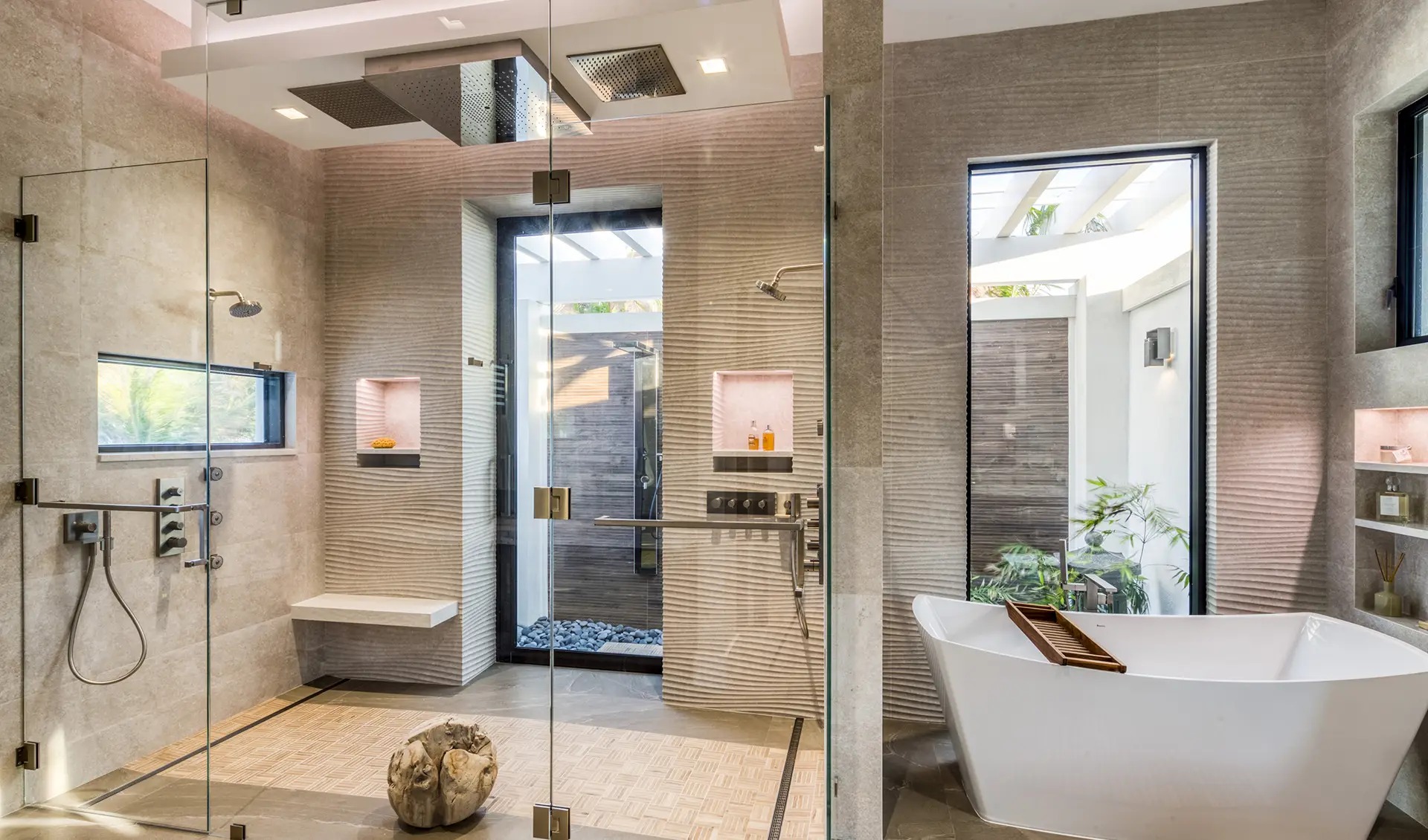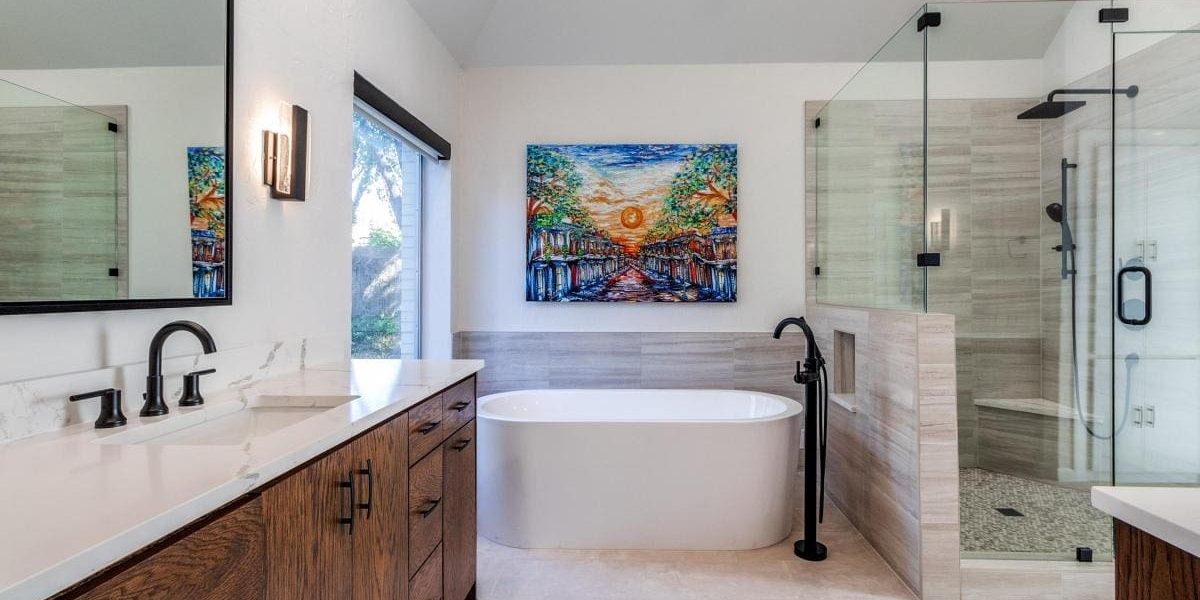Bathroom remodeling transforms your space into a sanctuary of comfort and style. It’s more than a facelift; it’s about enhancing functionality, boosting property value, and reflecting your unique taste. A well-executed remodel blends aesthetics with practicality, creating a space that feels luxurious yet serves daily needs. Whether you’re dreaming of a spa-inspired retreat or a sleek, modern upgrade, premier solutions prioritize quality materials, expert craftsmanship, and thoughtful design. From custom vanities to energy-efficient fixtures, every detail matters. This article answers common questions about bathroom remodeling, offering insights into trends, costs, and planning. Discover how to elevate your lifestyle with a bathroom that’s both beautiful and functional, tailored to your vision.
What Is Bathroom Remodeling, and Why Does It Matter?
Snippet Answer: Bathroom remodeling involves renovating or redesigning a bathroom to improve its appearance, functionality, and value, creating a space that enhances daily life.
Remodeling a bathroom goes beyond swapping out old tiles. It’s a strategic process that reimagines the space to align with your lifestyle. A well-planned remodel can turn a cramped, outdated bathroom into a haven of relaxation or efficiency. According to the National Association of Realtors, a bathroom renovation can recoup 60–70% of its cost in home value. Beyond financial benefits, it improves comfort, reduces maintenance, and incorporates modern features like water-saving fixtures or smart lighting. For families, it might mean adding storage or dual sinks. For aging homeowners, accessibility features like grab bars or walk-in showers become priorities. The process typically involves design planning, material selection, and professional installation, ensuring every element works harmoniously. By addressing both aesthetics and utility, remodeling elevates your home’s most intimate space.
How Much Does a Bathroom Remodel Cost in 2025?
Snippet Answer: A bathroom remodel in 2025 typically costs $10,000–$30,000, depending on size, materials, and labor, with luxury projects exceeding $50,000.
Cost varies widely based on scope and quality. A small guest bathroom with basic updates—like new tiles, a vanity, and fixtures—might start at $10,000. Mid-range projects, including custom cabinetry or a new shower, often fall between $15,000 and $25,000. High-end remodels with premium materials like marble or smart technology can surpass $50,000. Labor accounts for 40–50% of the budget, especially in urban areas where skilled contractors charge a premium. Materials also drive costs: porcelain tiles are affordable, while natural stone or custom glass enclosures add up. Hidden expenses, like plumbing or electrical updates, can inflate the budget if your home’s infrastructure is outdated. To manage costs, prioritize must-haves, get multiple quotes, and avoid mid-project changes. Financing options, like home equity loans, can spread costs over time, making your dream bathroom more attainable.
| Remodel Type | Cost Range | Key Features |
|---|---|---|
| Basic | $10,000–$15,000 | New fixtures, paint, basic tiles |
| Mid-Range | $15,000–$25,000 | Custom vanity, new shower, lighting |
| Luxury | $30,000–$50,000+ | High-end materials, smart tech, spa features |
What Are the Latest Bathroom Remodeling Trends for 2025?
Snippet Answer: 2025 bathroom trends include spa-inspired designs, smart technology, bold tiles, and eco-friendly fixtures for a luxurious, sustainable space.
Today’s bathrooms are evolving into personal retreats. Spa-inspired designs dominate, with features like freestanding tubs, rainfall showers, and natural materials like wood or stone. Bold tiles—think geometric patterns or oversized slabs—add personality, while neutral palettes keep things timeless. Smart technology is also on the rise: think motion-sensor faucets, heated floors, or mirrors with built-in lighting and defoggers. Sustainability is key, with water-saving toilets and LED lighting reducing environmental impact. Biophilic design, incorporating plants or natural light, creates a calming vibe. For smaller spaces, floating vanities and wall-mounted toilets maximize floor space, making the room feel larger. These trends blend style and function, ensuring your bathroom feels modern without sacrificing practicality. Staying updated on trends helps you invest in features that boost both enjoyment and resale value.
- Spa Vibes: Freestanding tubs, rainfall showers.
- Smart Tech: Motion-sensor faucets, heated floors.
- Bold Tiles: Geometric or oversized patterns.
- Eco-Friendly: Low-flow fixtures, LED lighting.
- Biophilic Design: Plants, natural light.
How Do You Plan a Successful Bathroom Remodel?

Snippet Answer: Plan a bathroom remodel by setting a budget, defining goals, hiring professionals, choosing quality materials, and creating a realistic timeline.
Planning is the backbone of a smooth remodel. Start by setting a clear budget, accounting for labor, materials, and a 10–15% contingency for surprises. Define your goals: Do you need more storage, better lighting, or accessibility features? Create a mood board with inspiration from platforms like Pinterest to guide your design. Hiring a reputable contractor is critical—check reviews, verify licenses, and ask for references. Work with a designer if your budget allows, as they can optimize layouts and prevent costly mistakes. Choose durable, water-resistant materials like porcelain or quartz to ensure longevity. Map out a timeline, typically 4–8 weeks for mid-range projects, and plan for disruptions (e.g., using a secondary bathroom). Permits may be needed for plumbing or electrical changes, so check local regulations. Regular communication with your contractor keeps the project on track, ensuring your vision becomes reality without unnecessary stress.
What Are Common Mistakes to Avoid in Bathroom Remodeling?
Snippet Answer: Avoid bathroom remodeling mistakes like poor planning, skipping permits, choosing cheap materials, or ignoring ventilation to prevent costly fixes.
Mistakes can derail even the best intentions. Poor planning tops the list—rushing into a project without a clear budget or design leads to overspending or disappointment. Skipping permits for plumbing or electrical work can result in fines or unsafe installations. Choosing cheap materials might save money upfront, but low-quality tiles or fixtures wear out fast, costing more in repairs. Inadequate ventilation is another oversight; without proper exhaust fans, mold and mildew thrive in humid bathrooms. Overlooking storage needs can leave you with a cluttered space, while ignoring lighting design creates a dim, uninviting room. Finally, don’t underestimate the importance of hiring skilled professionals. DIY sounds tempting, but complex tasks like waterproofing or tiling require expertise. By anticipating these pitfalls, you can ensure a remodel that’s both beautiful and durable.
- Poor Planning: Set a clear budget and design.
- Skipping Permits: Check local regulations.
- Cheap Materials: Invest in durable options.
- Ignoring Ventilation: Install proper exhaust fans.
- DIY Overreach: Hire pros for complex tasks.
How Long Does a Bathroom Remodel Take?
Snippet Answer: A bathroom remodel takes 4–8 weeks, depending on scope, with basic updates faster and luxury projects taking longer.
Timeline depends on the project’s complexity. A simple refresh—new paint, fixtures, and vanity—might take 2–4 weeks. Mid-range remodels, involving new tiling or a shower replacement, typically require 4–6 weeks. Luxury projects, with custom features or structural changes, can stretch to 8–12 weeks. Delays often stem from supply chain issues, so order materials early. Labor availability also matters; skilled contractors may have waitlists. Demolition and prep work take 1–2 weeks, followed by plumbing and electrical (1–2 weeks), tiling (1–3 weeks), and finishing touches (1 week). Unexpected issues, like water damage or outdated wiring, can extend the timeline, so build in a buffer. Clear communication with your contractor and a detailed schedule keep things moving, minimizing disruptions to your daily routine.
Conclusion
Bathroom remodeling is a powerful way to enhance your home’s comfort, value, and style. By blending modern trends like spa-inspired designs and smart technology with practical choices like durable materials and proper planning, you can create a space that feels uniquely yours. Avoiding common pitfalls and working with skilled professionals ensures a smooth process and lasting results. Whether you’re updating a small powder room or crafting a luxurious master bath, the right approach transforms your vision into reality. Ready to elevate your lifestyle? Start planning your remodel today—consult a trusted contractor, explore design ideas, and take the first step toward a bathroom that inspires and rejuvenates. Visit our resources for more tips and connect with experts to bring your dream space to life.
Read More Also: Regulatory Reasons to Prioritize Commercial Window
FAQ Section
Can I Remodel My Bathroom on a Budget?
Snippet Answer: Yes, remodel your bathroom on a budget by focusing on high-impact updates like paint, fixtures, or refinishing existing surfaces.
Budget-friendly remodels prioritize cost-effective changes. Repainting walls, updating lighting, or refinishing a tub can refresh the space for under $5,000. Shop for discounted materials or consider DIY for simple tasks like painting.
Do I Need a Permit for a Bathroom Remodel?
Snippet Answer: Permits are often required for bathroom remodels involving plumbing, electrical, or structural changes, depending on local regulations.
Check with your local building department. Minor updates like replacing fixtures typically don’t need permits, but moving plumbing or walls often does. A contractor can guide you through the process.
What Materials Are Best for a Bathroom Remodel?
Snippet Answer: Durable, water-resistant materials like porcelain tiles, quartz countertops, and stainless steel fixtures are ideal for bathroom remodels.
Porcelain is affordable and low-maintenance, while quartz resists stains. Avoid porous materials like untreated wood, which can warp in humid conditions.
How Can I Make My Bathroom More Eco-Friendly?
Snippet Answer: Use low-flow fixtures, LED lighting, and sustainable materials like bamboo to make your bathroom eco-friendly.
Water-saving toilets and showerheads reduce usage by 20–30%. LED lights cut energy costs, and recycled materials add sustainability without sacrificing style.
Should I Hire a Professional for My Bathroom Remodel?
Snippet Answer: Hiring a professional ensures quality and safety for complex bathroom remodels, especially for plumbing or electrical work.
Professionals bring expertise and efficiency, preventing costly errors. For simple updates, DIY is an option, but always hire licensed contractors for major tasks.
How Do I Choose a Bathroom Remodeling Contractor?
Snippet Answer: Choose a contractor with a strong portfolio, verified licenses, positive reviews, and clear communication for your bathroom remodel.
Ask for references, check online reviews, and compare quotes. Ensure they specialize in bathrooms and understand your vision for the project.
Can a Bathroom Remodel Increase My Home’s Value?
Snippet Answer: Yes, a bathroom remodel can increase home value by 60–70%, especially with modern, functional upgrades.
Updated bathrooms appeal to buyers, particularly with features like double vanities or energy-efficient fixtures, offering a strong return on investment.









